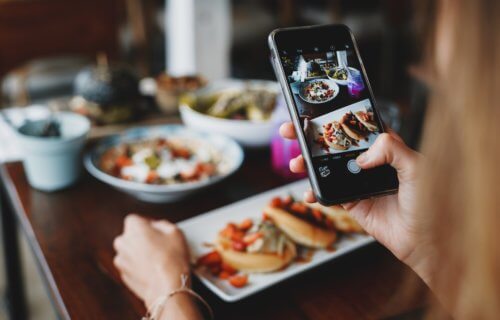FAIRFAX, Va. — It’s never been easier to find some inspiration in the kitchen. A quick scroll through Instagram, Facebook, or Pinterest and you’ll come across tons of delicious looking, perfectly-lit meals and recipes. Some of the most popular food posts are recipes promoting healthier food options. This brings up the question, do people who post, like, and engage with healthy eating posts really cook these meals? Not very often, according to researchers at George Mason University.
Study authors focused on Pinterest, a social media platform that isn’t discussed nearly as often as others but boasts a robust “foodie community.”
The team analyzed the accounts and posts of hundreds of Pinterest users and Pinterest influencers during their study. They discovered that while many users post and like healthy dishes featuring fish, chicken, and vegetables, those same users “more heavily engaged off-line” with recipes featuring dishes high in sugar, calories, and fat. The research team says this suggests that users are much more likely to actually eat the fattier foods.
“It’s an interesting discrepancy between what pinners posted/liked and how users actually consumed the information,” study leader Hong Xue, PhD says in a university release. “Pinners are more likely to post recipes that are socially rewarded with likes and repins. They are more likely to adhere to an elite social norm set by celebrities and influencers promoting healthier, low-calorie, clean eating. But when it comes to the recipes users are more interested in making food high in fat, sugar, and high calories. We see a very different picture. They’re commenting on and posting finished dish photos of the less healthy recipes.”
Can social media become a billboard for healthy dieting?
These findings emphasize the fact that there’s a big difference between popularity on social media and application in everyday life. Researchers add this holds major implications for anyone trying to promote healthier habits on social media. Health awareness campaigns, for example.
Among the study’s more in-depth findings, the George Mason team reveals recipe popularity (reposting, liking) usually increases with healthiness. However, signs of real-life application (commenting, sharing photos of finished dishes) are far higher among fatty recipes.
Incredibly, 18 percent of Americans are active on Pinterest, and a large percentage of those users engage with food content. With that in mind, the platform can potentially help nudge millions toward better eating given the right approach.
“If users are engaging with more unhealthy recipes, then perhaps influencers should offer options for lowering the fat in them, as part of those recipes. There’s definitely a role for healthcare organizations and fitness experts to provide healthier recipes that are big on flavor, as this appears to be an area where users find the recipes lacking. To change perceptions, public health experts need to make healthy food the treat, and not the other way around. There’s tremendous opportunities in social media to influence healthy behavior,” Xue concludes. “We’re only beginning to understand it’s potential and pitfalls.”
The study appears in the Journal of Medical Internet Research.
